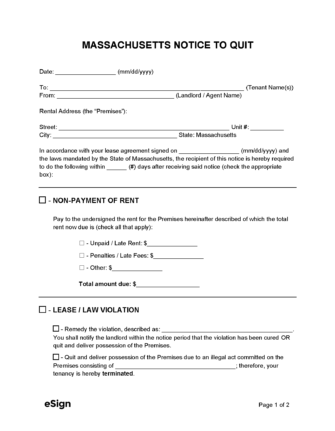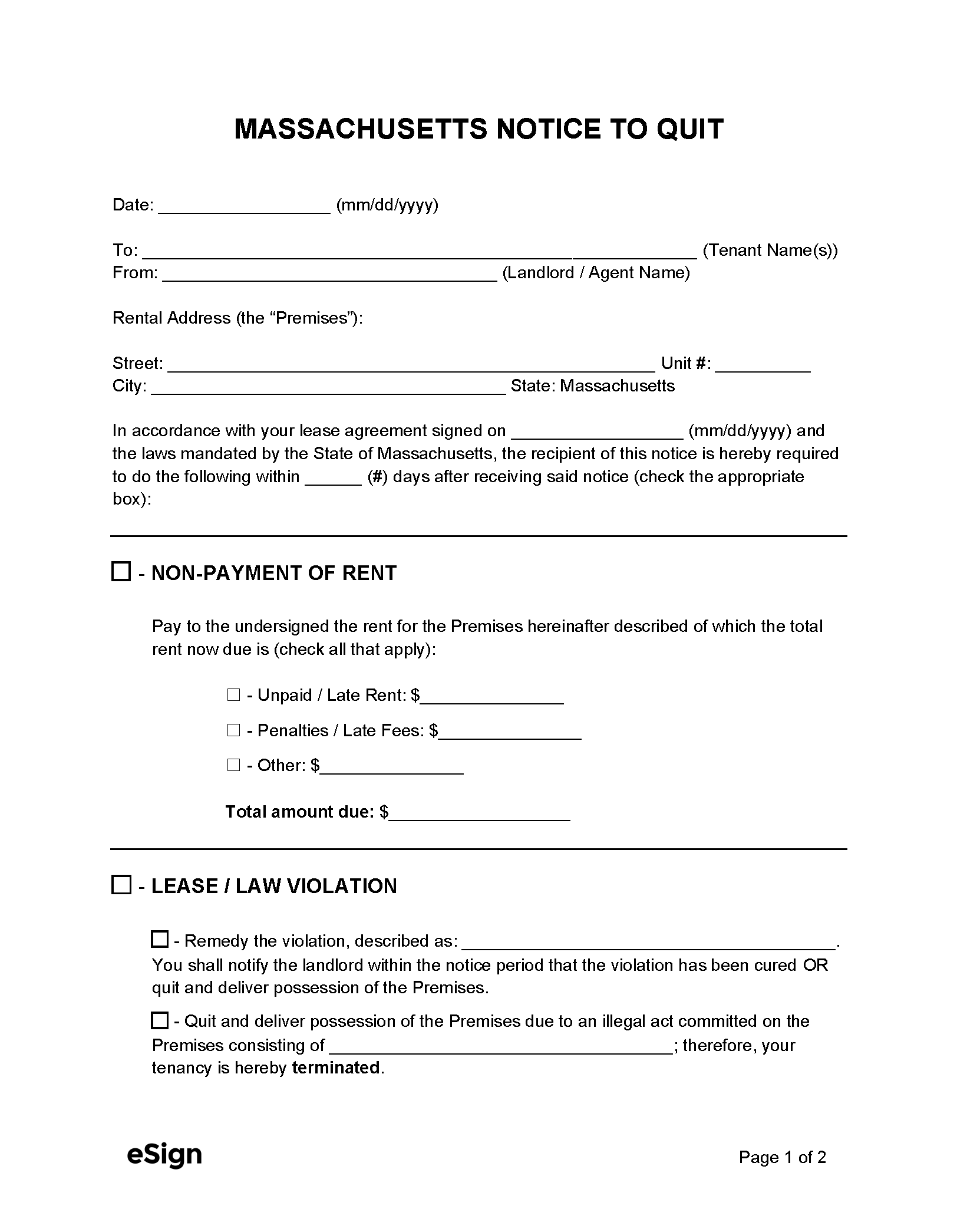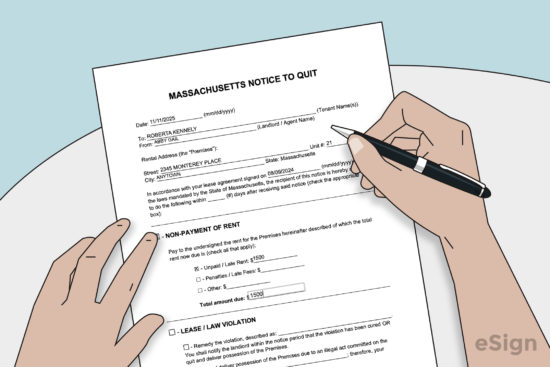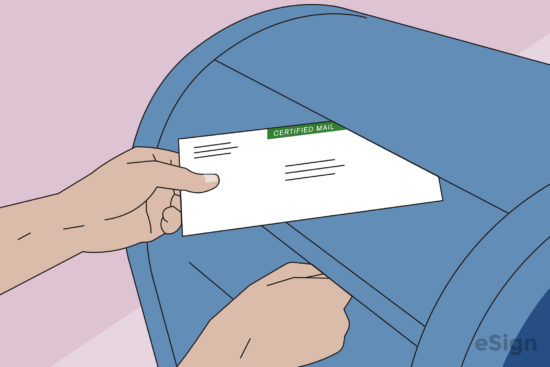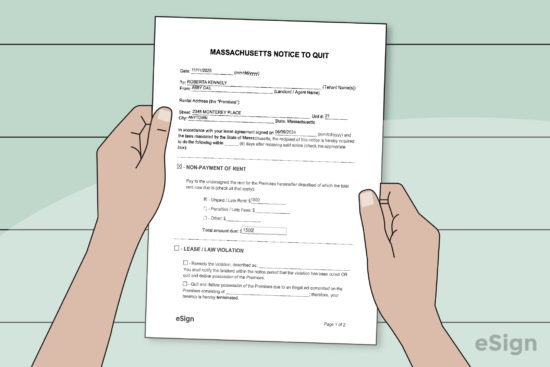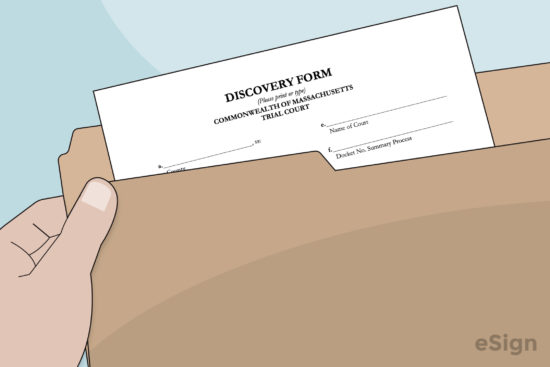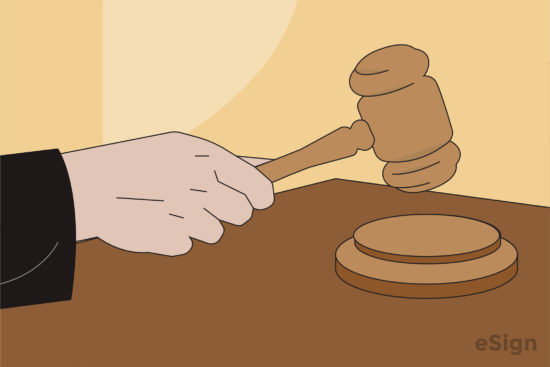Eviction Notices: By Type (5)
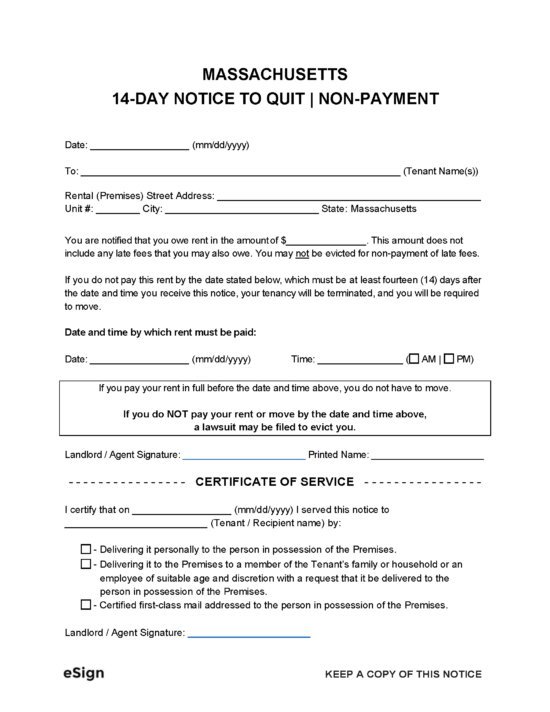 14-Day Notice to Quit | Non-Payment – An eviction notice for fixed-term tenancies that instructs tenants to pay rent or vacate the premises. 14-Day Notice to Quit | Non-Payment – An eviction notice for fixed-term tenancies that instructs tenants to pay rent or vacate the premises.
Download: PDF, Word (.docx), OpenDocument |
10/14-Day Notice to Quit | Non-Payment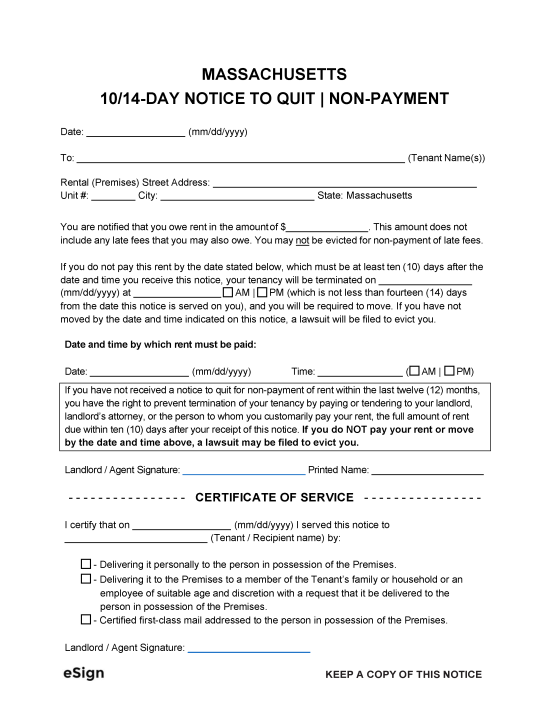 – For at-will tenancies only, this notice provides tenants with 10 days to pay rent or 14 days to move out. – For at-will tenancies only, this notice provides tenants with 10 days to pay rent or 14 days to move out.
Download: PDF, Word (.docx), OpenDocument |
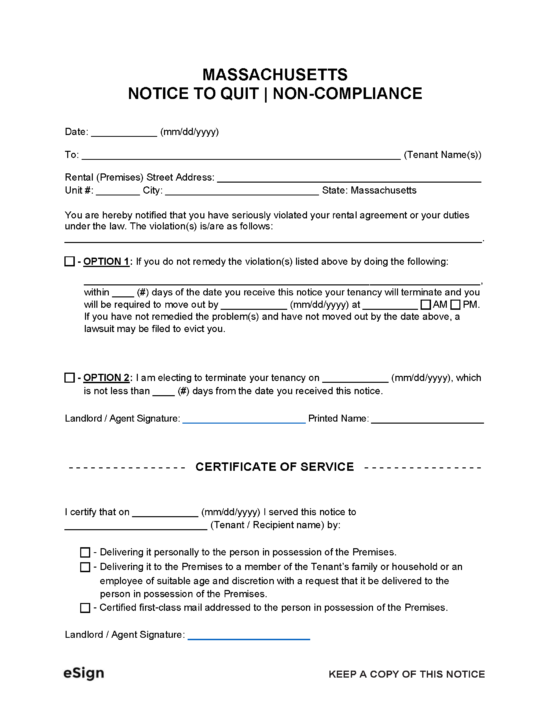 Notice to Quit | Non-Compliance – For tenants who violate the conditions of their rental agreement. Notice to Quit | Non-Compliance – For tenants who violate the conditions of their rental agreement.
Download: PDF, Word (.docx), OpenDocument |
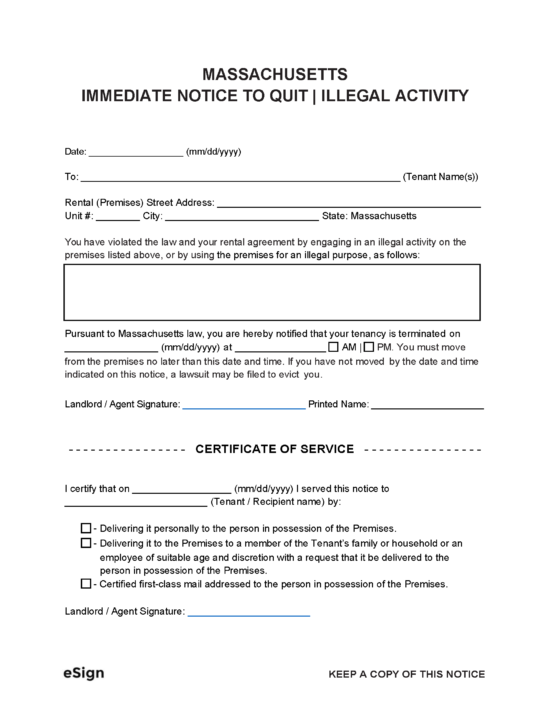 Immediate Notice to Quit | Illegal Activity – Informs a tenant that they are being evicted due to illegal acts committed on the premises. Immediate Notice to Quit | Illegal Activity – Informs a tenant that they are being evicted due to illegal acts committed on the premises.
Download: PDF |
1-Month Notice to Terminate Month-to-Month Lease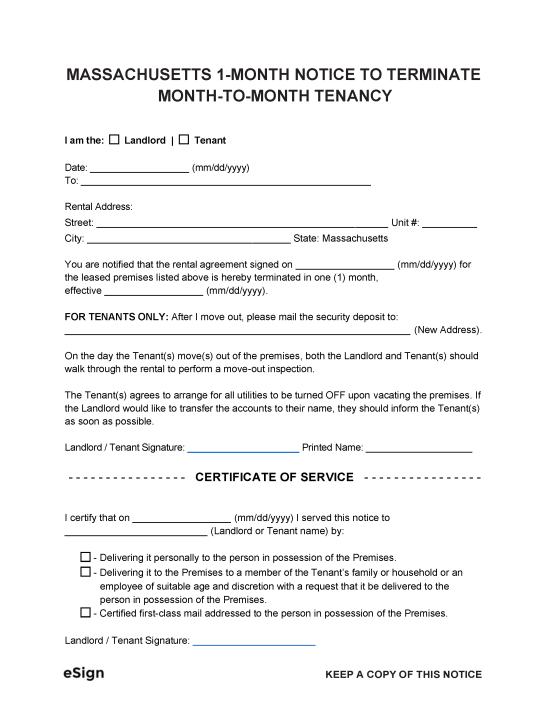 – Relays that a month-to-month rental agreement will terminate in 30 days or one rental term, whichever is longer. – Relays that a month-to-month rental agreement will terminate in 30 days or one rental term, whichever is longer.
Download: PDF, Word (.docx), OpenDocument |
Notice Requirements
- Grace Period for Late Fees – 30 days.[1]
- Non-Payment of Rent (Fixed-Term Tenancy) – 14 days.[2]
- Non-Payment of Rent (At-Will Tenancy) – 10 days to pay / 14 days to vacate.[3]
- Non-Compliance (Fixed-Term Tenancy) – Not mentioned in state statutes.
- Month-to-Month Tenancy Termination – 1 month.[4]
- Illegal Activity – No notice required.[5]
How to Evict a Tenant in Massachusetts
Step 1 – Draft a Notice to Quit
The landlord will need to serve the tenant with a notice that outlines the cause of eviction, the notice period, and whether action can be taken to maintain their lease.
Step 2 – Serve Eviction Notice
The landlord must deliver the notice and obtain proof of service. In Massachusetts, there isn’t a specific manner in which an eviction notice must be served.
Step 3 – Eviction Summons and Complaint
If the tenant fails to comply with the eviction notice, the landlord can purchase an Eviction Summons and Complaint (Sample) from the district court, housing court (Courthouse Locator), or the Boston Municipal Court to begin the eviction process.
Step 4 – Serve Summons and Complaint
The landlord must hire the sheriff or a constable to serve a copy of the Summons and Complaint on the tenant. The sheriff or constable will provide the landlord with a Return of Service.
The landlord must visit the courthouse to file the original Summons and Complaint, Return of Service, and a copy of the notice to quit. A fee will be charged upon filing.
Step 5 – Tenant’s Response to Eviction
If the tenant wants to contest the eviction, they will file a Summary Process Answer with the court stating the reasons why they shouldn’t be evicted. A copy of the completed Answer must be delivered to the landlord by mail or in person.
The tenant may file a Discovery Form which forces the landlord to answer questions regarding the case. If a Discovery is filed, the eviction trial will be postponed by two weeks.
Step 6 – Attend Eviction Trial
The eviction trial will allow both parties to present their cases before the court. Should either person fail to attend the trial, a default judgment may be awarded to the other.
The landlord’s chances of victory are improved if they bring a copy of the written lease, the notice to quit and eviction paperwork, proof of non-payment, and any witnesses that might support their case.
Step 7 – Eviction Judgment
If the landlord is awarded an eviction judgment, the tenant will be given 10 days to file an appeal.
If the tenant doesn’t file an appeal and isn’t eligible for a stay of execution, the landlord must file a Motion for Issuance of Execution requesting an Execution Order to authorize the sheriff or a constable to evict the tenant from the premises.
Step 8 – Eviction Date
The Execution Order will be served on the tenant by the sheriff or a constable, giving the tenant 48 hours to vacate. If the tenant continues to occupy the premises after 48 hours, the sheriff or constable will forcibly remove the individual.
Court Forms + Resources
Forms
- Discovery Form
- Signed By: Tenant
- Eviction Summons and Complaint Form (Sample)
- Signed By: Landlord, Court Witnesses, and Officer
- Motion for Issuance of Execution
- Signed By: Landlord and Housing Court
- Summary Process Answer
- Signed By: Tenant
Resources
